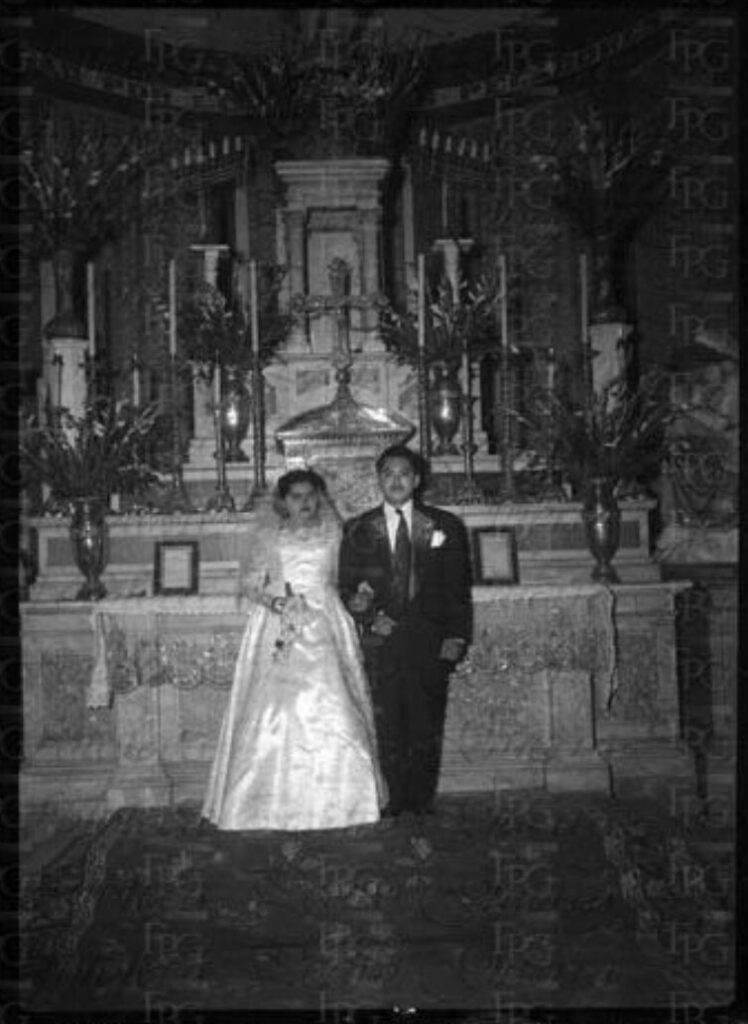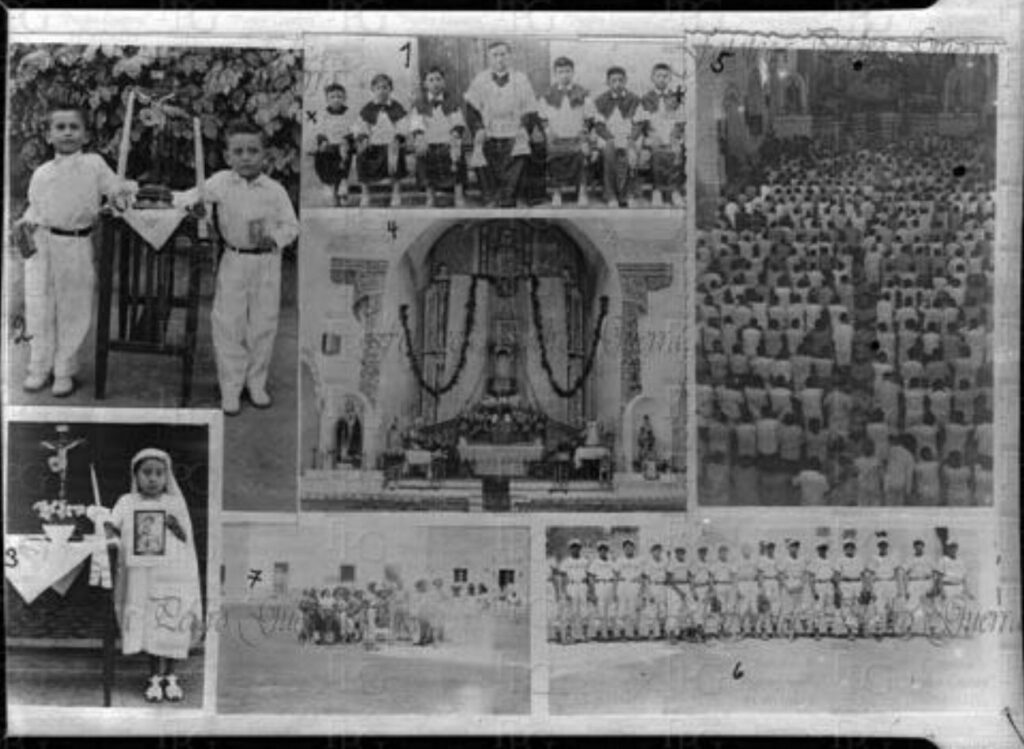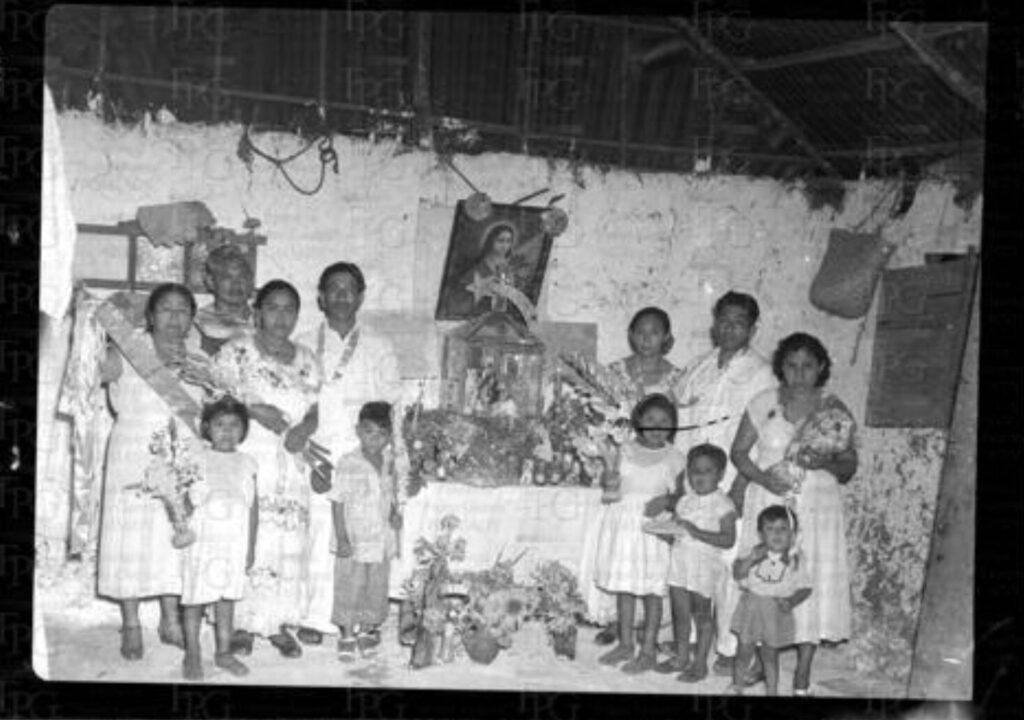In my search, I chose to explore images from the archive that reflected the religious lives of Yucatecan people in/around Mérida. As we have learned, a phenomenon referred to as religious syncretism swept the Yucatan peninsula over the course of its colonization and subsequent development by Catholic Spanish powers. Because of the violent religious inquisition that took place in Yucatán, I have continued to find myself intrigued by the decadence of the religious alters—whether in churches or in homes—and their characteristic ornate sacred items and decoration. I read at Izimal that one of the reasons the murals were covered was to discourage idolatry among Mayan people. Prior to the Spanish invasion, many Indigenous Gods were worshiped and subsequently incorporated into the new Catholic practices, such as alters.
Alters also functioned to preserve sacred communal spaces. In time, as we saw in Izamal, churches and convents were built in place of these in the hopes of replacing the Indigenous practices with Catholic ones. While they changes the nature of the place of worship/gathering, its function as a place of gathering and worship continued to lend itself to Mexican life and traditions. As you can see in the third image, the alter is in a traditionally built home and has become their own, serving whatever purpose they want. Despite the violence of the Catholic church in Mexico, worship continues to be a deeply community-oriented structure, lending us a window into the history of religious syncretism.



